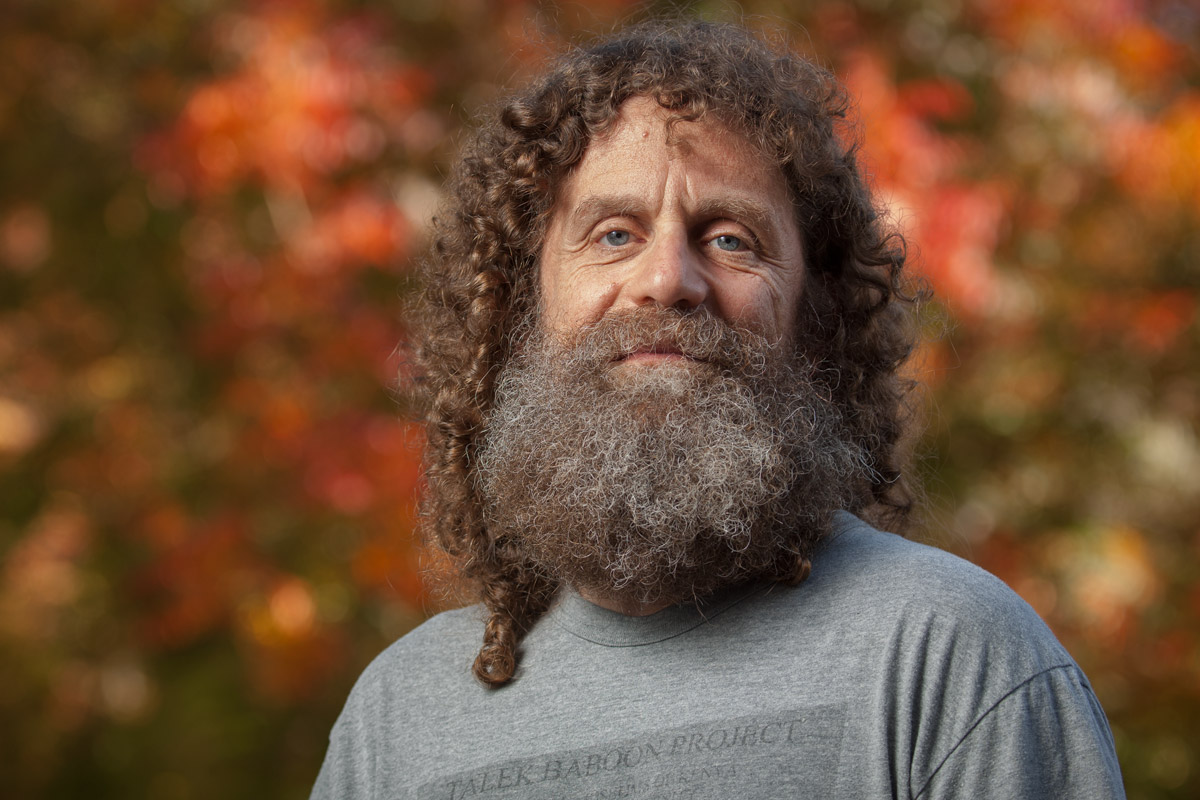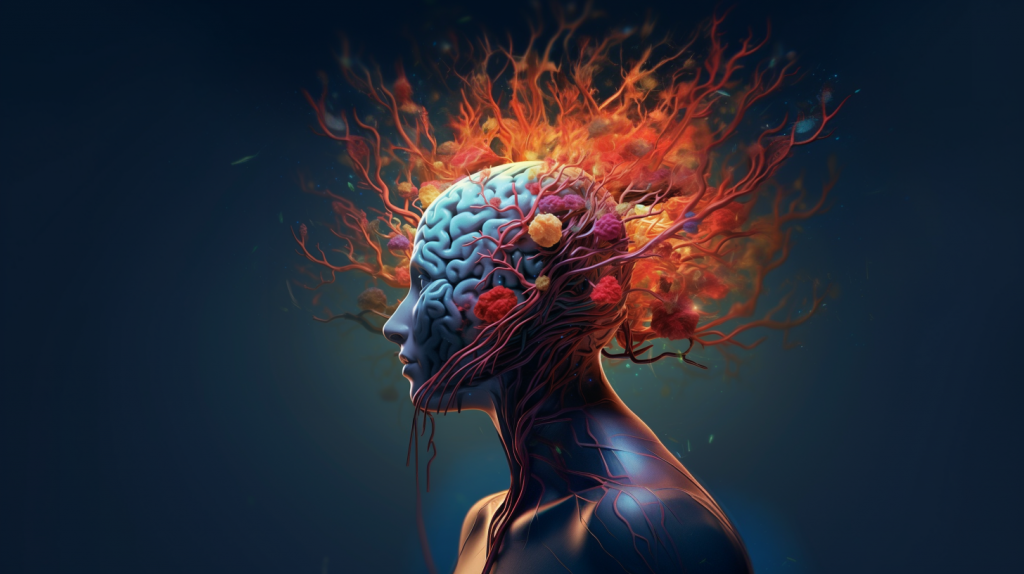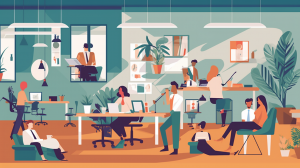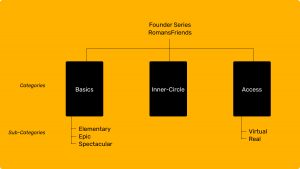We will address the question of free will and examine & argue that our choices and behaviors are influenced by various factors. We will also address whether this realization enables us to have some form of free will and how change is possible. Is there gamification for change management?
The illusion of free will
There is a widespread assumption that we humans have free will and that our choices and behaviors are based (solely) on our individual choices. For years I have been following the work of Dr. Robert Sapolsky, who is also the author of the book: 'Determind: Life Without Free Will' (2023). Sapolsky argues that our supposed free will is actually influenced by numerous factors. These factors include sensory environment, hormone levels, neuroplasticity, genetics, and cultural upbringing.

Our sensory environment - all that we see, hear, feel and experience - shapes our brain and influences our decision-making. Studies have shown that people make different decisions in different environments. For example, when we are in a noisy and hectic environment, we may make more impulsive decisions than when we are in a quiet and thoughtful environment.
Our hormone levels also play a role in our decisions. Hormones such as dopamine, serotonin and cortisol can influence emotions and moods, which in turn affect our decisions. For example, when we have high levels of dopamine, we are more inclined to make risky decisions.
Neuroplasticity, our brain's ability to adapt and change, also plays a big role in influencing our decisions. Our brain cells can become more or less interconnected depending on which neuronal networks are frequently activated. This means that our formative experiences and habits influence our decision-making processes.
Genetics also contributes to our decisions. Studies have shown that certain genetic variations can correlate with certain behaviors and decision-making patterns. Of course, genetics is not the sole factor, but it can play a role in adaptation for certain behaviors.
Finally, cultural upbringing is also a significant factor influencing our decisions. The values, norms and beliefs we are taught through our cultural upbringing influence our mental models and the framework within which we make decisions. What is considered "right" or "wrong" is defined differently from culture to culture.
All these factors are intertwined and leave no room for a separate concept of free will. Rather, our supposed free will is the product of a complex interaction between sensory environment, hormone levels, neuroplasticity, genetics, and cultural upbringing.
This does not mean that we cannot make decisions or that we are not responsible for our actions. But it does mean that our decisions are influenced by a variety of influences that we cannot fully control.
The possibility of change
Now the question is whether recognizing the influences around us can give us a small spark of free will. This spark makes us believe that controlled change is possible. However, and this runs like a red thread through a multitude of Spalosky's research results, this does not change the situation that it is not really possible for us to change ourselves.
It is fascinating how the behavior of living beings can be influenced by external influences. We experience it again and again that our environment plays a strong role in changing our behavior.
Yes of course...we can be influenced by our environment and show changes in our behavior. But the ability to consciously and intentionally change our behavior goes beyond these influences.
The notion of free will and the ability to change ourselves is a complex issue. There are many philosophical, scientific and ethical debates about whether free will exists and to what extent we have the ability to change ourselves: How much do we actually depend on our environmental influences? And can the will alone be enough to change ourselves?
These are questions to which no simple answer exists. They require deeper reflection and discussion about what it means to change ourselves and how we can influence our environment to bring about change.
Neurobiology and change
With impressive precision, research has shown that neurobiology works the same way in conditioning marine snails, for example, as it does in mammals. This finding emphasizes the conservation of certain pathways in the brain that are responsible for learning processes and changes.
The way our brain develops and changes is fascinating. It influences our reactions, emotions and behavior in many ways.
It becomes clear that our brain responses to optimistic stimuli can be influenced by our understanding of change. When we become aware that change is possible and that we have the ability to adapt and grow, we tend to seek out more positive information. Our brains are trained to be more flexible and to explore new avenues.
This knowledge has a great impact on our everyday lives. By becoming aware that we have the potential to change, we bring about a positive change in our thought processes and actions. We become motivated to look for new possibilities and expand our boundaries.
In a world as fast-paced as ours, the ability to adapt and change is crucial. Neurobiology shows us that change is indeed possible and that our brains are ready to accept and integrate change.

Neurobiology and its connection to change open up a wealth of possibilities for personal and professional development. It is up to us to use the findings from research and consciously influence our brain responses to bring about positive changes in our lives.
Examples of change
History is full of inspiring examples of change. People like Nelson Mandela and Martin Luther King have shown that it is possible to make a difference and change the world for the better, even in the most adverse circumstances. Their achievements are not only impressive, but also give us hope and motivation to tackle our own challenges.
Nelson Mandela, the South African anti-apartheid activist and later president, is a living example of resistance and change. He spent 27 years of his life in prison for fighting against the racist policies of apartheid. Although he suffered physically and emotionally during his imprisonment, he never gave up. After his release, he continued to work for justice and reconciliation in South Africa and became a symbol of peace and unity.
Martin Luther King, the American civil rights leader, also fought against injustice and racial discrimination. His most famous moment was his famous speech "I Have a Dream", in which he advocated equality and freedom for all Americans. King organized peaceful protests and led the civil rights movement. Although he faced violence and resistance, he stood up for his beliefs nonviolently and inspired millions of people worldwide.
The stories of Mandela and King show us that change is possible, even in the most difficult circumstances. They encourage us to embrace our own struggles and stand up for what we believe in. But they are not the only examples of change that can inspire us.
We can also find examples of altered neurochemistry in science. Research into the human brain has shown that our neurochemistry can change depending on what experiences we have and what thoughts and emotions we nurture. This means that we ourselves have the ability to influence our way of thinking and our emotions and to bring about positive changes in our lives.
By looking for more examples of changed neurochemistry, we can inspire and motivate ourselves. By seeing how other people have improved their circumstances, we can learn to grow from their experiences and discover new ways for ourselves. There are countless stories of people who have achieved positive changes in their lives despite difficulties, fears or negative thinking patterns.
It is up to us to look for these examples and learn from them. We can surround ourselves with people who inspire and motivate us to make positive changes. We can examine our thought patterns and habits and work specifically on our neurochemistry. With the right attitude and determination, we can unleash our own potential and live a fulfilling life.
So, be curious, look for examples of change in the world and in science. Be inspired by the stories of people like Nelson Mandela and Martin Luther King and use their legacy to change your own neurochemistry and bring about positive change in your life.
The value of change
So Sapolsky argues that although change can be difficult, the effort to be better people is still worthwhile.
Change can be a challenge. It often takes courage, perseverance and determination to overcome old habits, thought patterns and behaviors. It is not always easy to break away from your comfort zone and break new ground.
But why is the effort to be better people still worthwhile? Here are some reasons why change has high value:
- Personal Growth: Change enables personal growth and development. By facing new challenges and leaving our comfort zone, we learn more about ourselves and discover new potentials and abilities.
- Fulfillment and happiness: Stagnation can lead to dissatisfaction and frustration. Change allows us to face new challenges and realize our goals and dreams. The fulfillment we experience from reaching new milestones and overcoming obstacles leads to a deeper sense of happiness.
- Positive Influence: When we strive to be better people, we can have a positive impact on those around us. Our changes can inspire and motivate others to make positive changes in their lives as well. By being a role model for others, we can help create a better society.
So change requires commitment, determination and a willingness to engage in new experiences. There may be setbacks and challenges along the way, but the result is worth it.
It is the changes that allow us to grow, improve our relationships, find fulfillment, and have a positive impact on the world around us.
The value of gamification for change management
- Personal Growth:
- the prevention of stagnation &
- the conscious experience of the individual impact
are native mechanisms in Gamification. In hardly any other state, like the gamified mindset, do we follow these three values so intuitively and naturally.
to 1) Here we voluntarily face (from a rational point of view seemingly unnecessary) challenges.
to 2) Here we are actively searching for the new, the unknown and everything only so that we can assimilate this 'unknown', master it and let it become our 'comfort zone'. Only to then strive for the new again as quickly as possible.
to 3) Here, after all the personal challenges, setbacks, learning experiences, and surprises, we hope to ultimately have a positive impact on a narrative, mission, or the team we're on with (team sports; online games).
Based on Sapolsky's research showing how strongly our environment influences our behavior, you can see the match to Gamification's human-centered design approach.
Conclusion
We are therefore the sum of our biology and its interaction with the environment. We have seen that this view should not lead to hopelessness or resignation, but to the realization that change is possible and worth striving for.
It is important to understand that our biology and our environment are interconnected. Our genes and genetic makeup play a role in our characteristics and behavior, but they are not the only factors that make us. Our environment, our experiences and the people around us also shape us.
There are many ways to strive for change. We can examine and change our attitudes and thought patterns. We can acquire new skills and competencies. We can seek help and support from others. Change requires work and effort, but it is worth it.
It is important to recognize that we do not always have full control over our circumstances. There are things that are beyond our control. But even in such situations, we can learn to influence our reactions and how we deal with the circumstances. We can learn to adapt and make the best of the situation. We can also learn to create such situations not only for ourselves but also for others.
The key to change lies in the realization that we have responsibility for our behavior and also the behavior of others around us, in part. You cannot not influence others.
This also leads to one of the most profound experiences in gamification design, at least for me personally: instead of trying to 'convince' the individual directly, as we try to do with extrinsic motivators in the classical sense, for example, gamification can work primarily in context design to set frameworks (for many).


